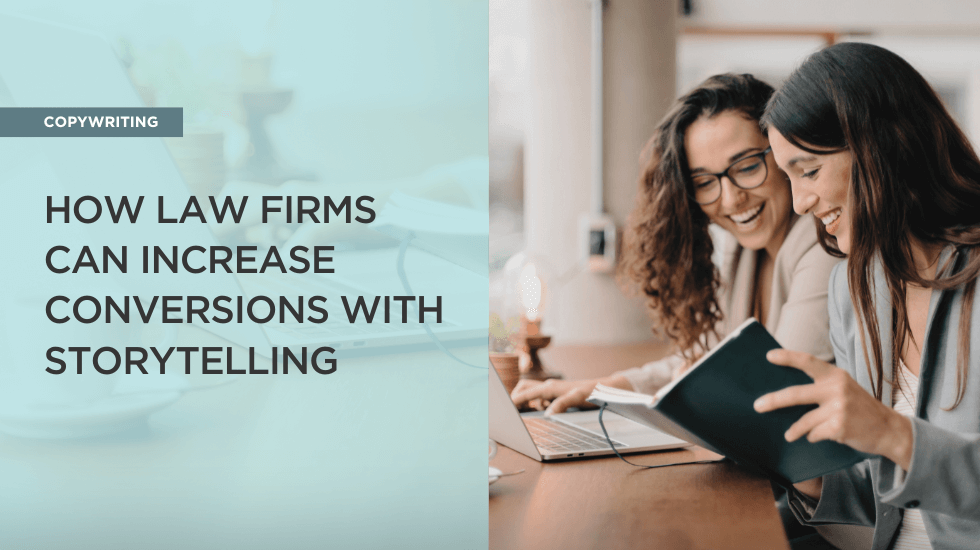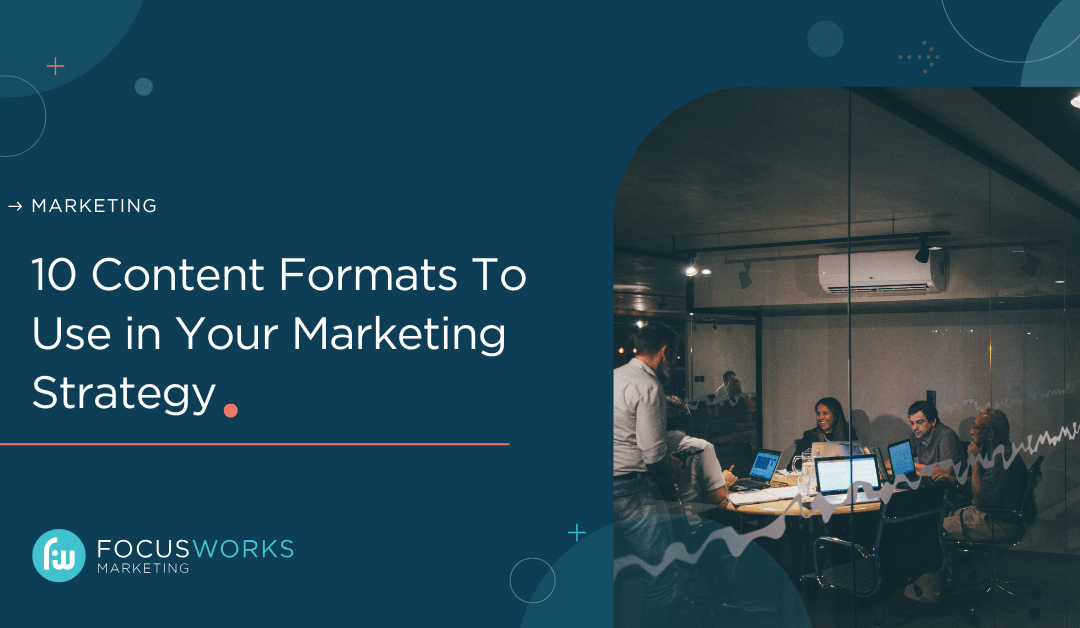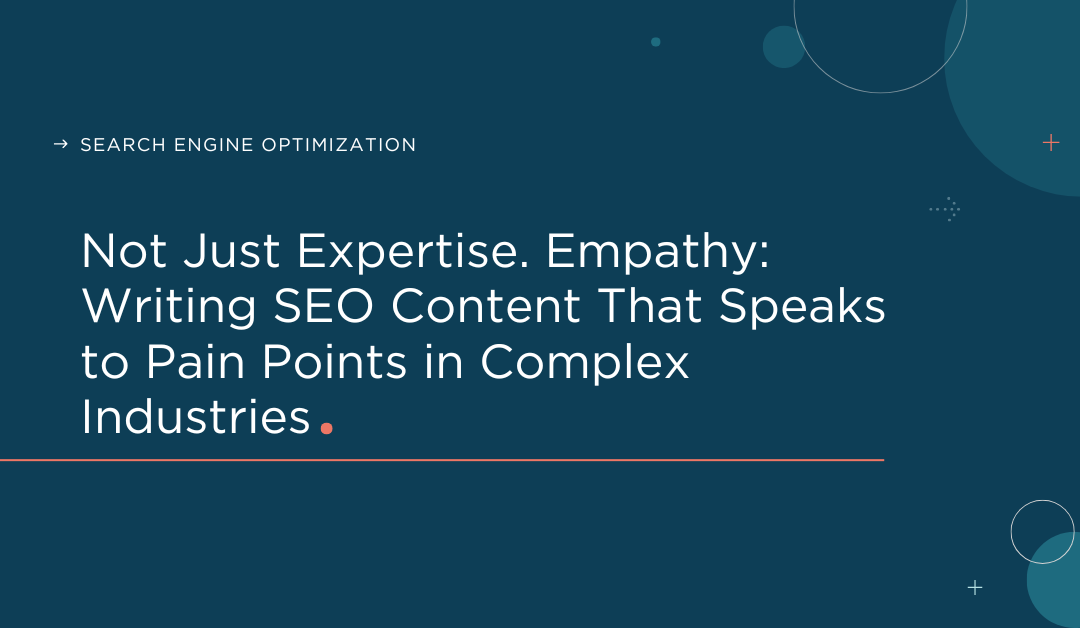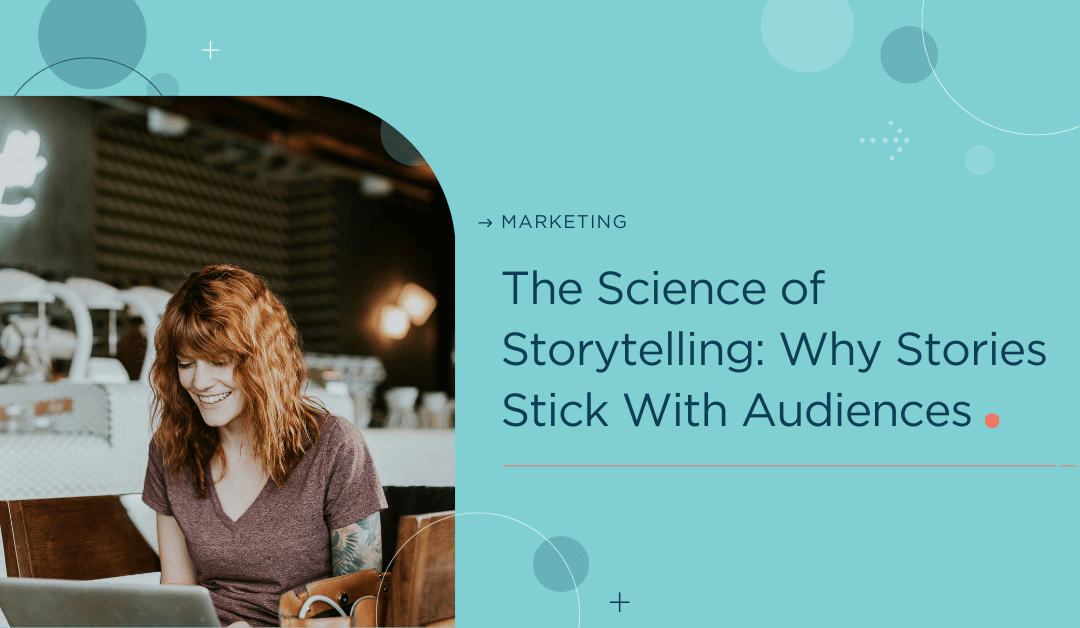Storytelling is powerful. Stories allow us to convey messages in a meaningful and memorable way. They communicate experience and empathy. They build trust.
But what does storytelling mean in the context of law firm copywriting, and specifically conversion copywriting?
What is conversion copywriting?
Conversion copywriting focuses on crafting materials that nudge prospects down the sales funnel to become customers, and it’s a tricky, nuanced area of marketing.
That’s because it—at least when done correctly—requires tapping into psychological triggers that spur action.
Why does storytelling affect conversions?
Storytelling has an impact on conversions, but why exactly is that? There are two important neuroscience blueprints we need to examine: the neuroscience of storytelling and the neuroscience of conversion copywriting.
Neuroscience of storytelling: this is your brain on stories
Storytelling has a chemical impact on audiences. Engaging readers via a story triggers powerful neurochemical responses thanks to cortisol, oxytocin, and dopamine.
Cortisol: better known as the stress hormone, cortisol drives a sense of excitement or motivation when triggered in storytelling. The absence of cortisol is notable, too—without it, readers can lose interest—and fast.
Oxytocin: the “love” hormone, oxytocin is responsible for making us feel empathetic and bonded. And when oxytocin is combined with cortisol,
Dopamine: Dopamine affects our focus, motivation, memory, and reward-response behavior. When effectively tapped into, you can incentivize your audience to act on your message.
Neuroscience of conversion copywriting: lead your audience in the right direction
Emotions play a crucial role in decision-making, guiding our choices and judgments. They often have more influence than logical reasoning, shaping decisions by creating positive or negative perceptions of options.
This is because we process emotions faster than rational thoughts. When our emotions are triggered (whether through a real-life event or by simply reading something online), they can sway our decisions in a particular direction.
There are numerous conversion copywriting techniques you can pull out of your copywriting toolkit in addition to storytelling: social proof, decision paralysis, and scarcity. The best conversion copywriting layers these techniques to drive results while also building a genuine connection with the audience.
The data behind the stories: storytelling stats to convince you
Big picture? Adding storytelling to your conversion copywriting will make your content more memorable and trustworthy and improve conversions.
Let’s back that claim up with some stats, though:
- People retain only 5–10% of information that consists of statistics alone. But when they hear a story, they remember 65–70% of the information
- If people love a brand story, 55% are more likely to buy the product in the future, and 44% will share the story
- 76% of consumers prefer it when CEOs publicly discuss a subject they care about
- Storytelling can boost conversion rates by 30%.
- Adding a story to a blog post resulted in nearly 300% more people scrolling all the way to the bottom and made the average time on page over 5x higher.
- Storytelling increases the value of products by up to 2,706%.
Telling your law firm’s story effectively: where to start
By harnessing the power of storytelling, law firms can create a compelling narrative that not only captures the attention of potential clients but also builds trust and establishes a strong connection.
Follow these steps to find your narrative:
1. Identify your unique value proposition
Before crafting your narrative, it’s crucial to identify what sets your law firm apart from others. Consider the following questions to help articulate your value prop:
- What problems do you solve for your clients?
- What are the benefits of your services, and why are they valuable?
- How is your law firm different from competitors?
Your value proposition should drive the “why” of why leads should choose your firm. Without it, it’s difficult to create an effective narrative arc for your story.
2. Define your target audience
Speaking of crafting a compelling narrative—who are the potential clients you’re talking to?
Consider who your ideal clients are, along with their needs, concerns, and pain points. When you know what’s on their minds when they scroll through your social feed or click through to your website, you can tailor your copywriting to communicate the right message to them.
Tips for identifying your ideal audience:
- Looking at marketing analytics to evaluate demographic engagement trends
- Interview or survey your current clients
- Analyze your competitors
Take this information to create target audience personas for your marketing. These client personas help clearly define who you’re talking to and give your marketing team, including any outsourced attorney copywriting support, a helpful point of reference when creating content.
3. Put your audience at the center of your story
You’re telling your story, but it’s really not about you. It’s about your audience.
Your audience members need to see themselves in your story. They must be convinced that your story is relevant to them, that they will be positively impacted if they click through to sign up for a newsletter or schedule a consultation.
You can do that by:
- Using audience-centered language (i.e., leaning on “you” or “we” rather than “I”)
- Asking pose questions or prompts to encourage engagement
- Anticipating audience questions and pain points
- Incorporating frequent calls to action
- Eliminating complex and jargon-heavy language in your copy
4. Use storytelling frameworks
Okay, so you’re feeling on board with the idea of storytelling, but for many attorneys who are new to this whole copywriting, getting started is hard.
We’ll share one secret of copywriting: the best copy isn’t built from scratch but from frameworks. Frameworks help you create authentic and on-brand copy without the head-scratching—and luckily, there are some great frameworks to support storytelling in copywriting.
The Hero’s Journey
One of the classics, the Hero’s Journey was originally conceptualized by writer Joseph Campbell. The Hero’s Journey is a theory AND a copywriting framework that postulates all stories follow the same ancient pattern: a protagonist sets off on an unexpected quest, faces challenges along the way, and returns home transformed.
The troublemaker
Deploy troublemaker frameworks when you have real-life stories you can use to demonstrate tension and drama. This is a great option for law firms with client stories they can use (with appropriate and compliant permission, of course).
Future pacing
Future pacing refers to the technique of using your storytelling to help your audience imagine the possibilities of the future.
More than most audiences, your readers are looking at your marketing materials because they’re already imagining themselves in another place, one where they aren’t dealing with their legal matters. You can then tie in your legal services and their benefits to connect your audience with their future.
Before-after bridge
Another classic copywriting strategy is the before-after bridge framework. With this one, you depict where your audience has been and the problems they’ve faced (the “before”), then draw their attention to the “after,” where their problems have been solved or they’ve achieved their goals. Finally, you spotlight a “bridge” (typically your services) to explain how they arrived there.
Win clients through compelling storytelling with the support of content specialists
Storytelling plays a crucial role in the success of law firms in today’s digital age. By harnessing the power of storytelling, law firms can boost conversions, engage clients, and enhance their online presence. It allows them to stand out in a saturated online world and capture the attention of potential clients.
Because law firms have so many demands on their time, working with the right marketing agency can help them take case details (while protecting client confidentiality) and weave them into compelling stories that will engage potential clients.
If you’re ready to grow your law firm with Content That Converts™, schedule a call with our team at FocusWorks. We can help you increase conversions with effective storytelling.



